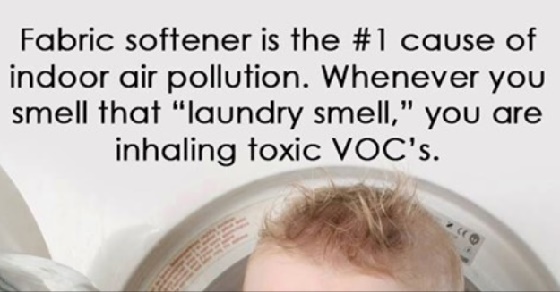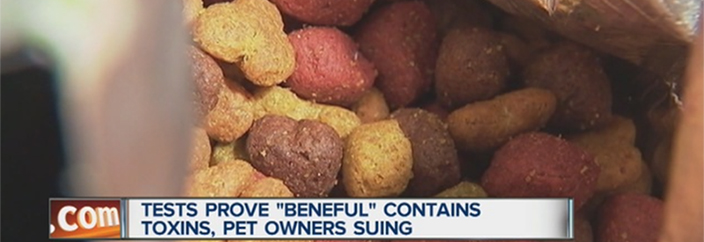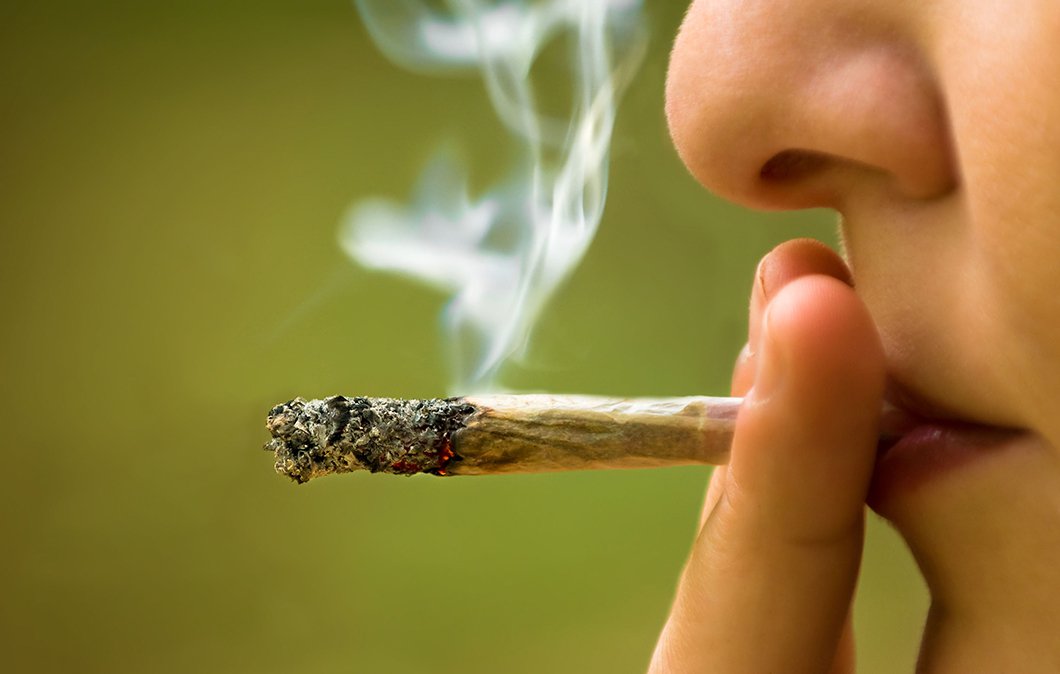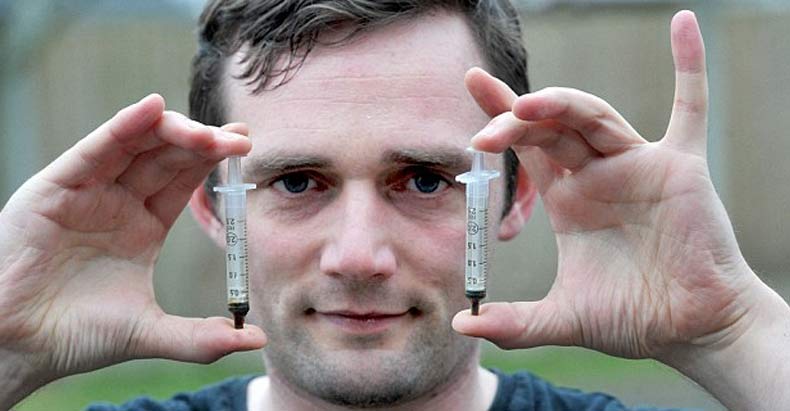We have been led to believe that marijuana is a dangerous and addictive drug that destroys lives and is a far greater risk than other recreational drugs such as alcohol. Governments have tried diligently to to convince the public that people who use pot are more at risk to themselves and the public than those who use alcohol. As the debate over marijuana legalization continues, a new study now shows that smoking the controversial plant is about 114 times safer than drinking alcohol.
In fact, alcohol was found to be the deadliest drug on an individual level, at least when it comes to the likelihood of a person dying due to consuming a lethal dose. Heroin and cocaine were the next most deadly substances, followed by tobacco, ecstasy, and meth. Trailing up the rear was marijuana.
According to the team of international researchers behind the study, published in the journal ‘Scientific Reports,’ the findings suggest that marijuana risks — at least those related to mortality — are trumped when compared to substances like alcohol.
“The results confirm that the risk of cannabis may have been overestimated in the past,” the report reads. “At least for the endpoint of mortality, the [margin of exposure] for THC/cannabis in both individual and population-based assessments would be above safety thresholds (e.g. 100 for data based on animal experiments). In contrast, the risk of alcohol may have been commonly underestimated.”
Both alcohol and cannabis can be considered a narcotic or hallucinogen, that affects the central nervous system, causing changes in behavior and often addiction. But there are major differences in how each reacts with the human body.
As reported by the Washington Post, the study’s results aren’t exactly new, though they do confirm similar findings first reported a decade ago. In a separate story last year, the Post noted that Wayne Hall of the World Health Organization said it’s nearly impossible for even those who smoke large amounts of cannabis to overdose on the drug.
“The estimated fatal dose [of THC, the primary active compound in marijuana] in humans derived from animal studies is between 15 and 70 grams. This is a far greater amount of cannabis that even a very heavy cannabis user could use in a day,” Hall wrote last year.
Even alcohol’s unsafe margin of exposure (MOE) ratio isn’t all that surprising since, unlike heroin and cocaine, it is legal and much more readily available and accepted.
Alcohol, regardless of its type (i.e. beer, wine, liquor, etc) is a class A1 carcinogen which are confirmed human carcinogens. Alcohol consumption has been causally related with breast cancer for some time. Increasing evidence indicates a stronger association with neoplasms, though the risk is elevated for other types of breast cancers too. Regardless of how much alcohol is consumed, it will always be a class A1 carcinogen. That doesn’t mean you will get cancer from drinking a beer or a glass wine, but the classification for the substance is clear.
Marijuana legalization advocates are welcoming the new study, using it to suggest that America’s current ban on the drug is wrong and misguided, considering the mortality rates associated with alcohol and tobacco — both of which are legal and easily accessible to those of age. Marijuana, meanwhile, is still illegal on the federal level and largely illegal on the state level — except in Colorado, Oregon, Alaska, and the District of Columbia.
Even the researchers noted that compared to other drugs, their findings support regulating pot as a legal substance instead of a banned one.
“Currently, the MOE results point to risk management prioritization towards alcohol and tobacco rather than illicit drugs,” the report reads.“The high MOE values of cannabis, which are in a low-risk range, suggest a strict legal regulatory approach rather than the current prohibition approach.”
10 REASONS CANNABIS IS SAFER THAN ALCOHOL
1. Many people die from alcohol use. Nobody dies from cannabis use. The U.S. Centers for Disease Control and Prevention (CDC) reports that more than 37,000 annual U.S. deaths, including more than 1,400 in Colorado, are attributed to alcohol use alone (i.e. this figure does not include accidental deaths). On the other hand, the CDC does not even have a category for deaths caused by the use of cannabis.
2. People die from alcohol overdoses. There has never been a fatal cannabis overdose. The official publication of the Scientific Research Society, American Scientist, reported that alcohol is one of the most toxic drugs and using just 10 times what one would use to get the desired effect could lead to death. Cannabis is one of — if not the — least toxic drugs, requiring thousands of times the dose one would use to get the desired effect to lead to death. This “thousands of times” is actually theoretical, since there has never been a case of an individual dying from a cannabis overdose. Meanwhile, according to the CDC, hundreds of alcohol overdose deaths occur in the United States each year.
3. The health-related costs associated with alcohol use far exceed those for cannabis use. Health-related costs for alcohol consumers are eight times greater than those for cannabis consumers, according to an assessment recently published in the British Columbia Mental Health and Addictions Journal. More specifically, the annual cost of alcohol consumption is $165 per user, compared to just $20 per user for cannabis. This should not come as a surprise given the vast amount of research that shows alcohol poses far more — and more significant — health problems than cannabis.
4. Alcohol use damages the brain. Cannabis use does not. Despite the myths we’ve heard throughout our lives about cannabis killing brain cells, it turns out that a growing number of studies seem to indicate that cannabis actually has neuroprotective properties. This means that it works to protect brain cells from harm. Research published in the journalsBehavioural Brain Research and Experimental Brain Researchdemonstrated that even extremely low doses of THC (cannabis’s psychoactive component) — around 1,000 to 10,000 times less than that in a conventional cannabis cigarette — can jumpstart biochemical processes which protect brain cells and preserve cognitive function say researchers from Tel Aviv University (TAU). Another example is one recent study which found that teens who used cannabis as well as alcohol suffered significantly less damage to the white matter in their brains. Of course, what is beyond question is that alcohol damages brain cells. Scripps scientists discovered that eleven months of alcohol consumption that produced a blood alcohol level sufficient to be considered intoxicated decreased neurogenesis by more than fifty percent! Furthermore, the decrease in neurogenesis lasted for many weeks of abstinence. In contrast to the effects of alcohol, a series of publications during the past few years suggest that stimulating the brain’s cannabis neurotransmitter system appears to have the exact opposite effects upon neurogenesis in the hippocampus of both young and old laboratory animals and humans, i.e. neurogenesis is increased by stimulation of our brain’s cannabis receptors. When we are elderly, our brain displays a dramatic decline in neurogenesis within the hippocampus. This decline may underlie age-associated memory impairments as well as depression. Research has demonstrated that stimulating the brain’s cannabis receptors restores neurogenesis. Thus, later in life, cannabis might actually help your brain, rather than harm it.
5. Alcohol use is linked to cancer. Cannabis use is not. Alcohol use is associated with a wide variety of cancers, including cancers of the esophagus, stomach, colon, lungs, pancreas, liver and prostate. Cannabis use has not been conclusively associated with any form of cancer. In fact, one study recently contradicted the long-time government claim that cannabis use is associated with head and neck cancers. It found that cannabis use actually reduced the likelihood of head and neck cancers. If you are concerned about cannabis being associated with lung cancer, you may be interested in the results of the largest case-controlled study ever conducted to investigate the respiratory effects of cannabis smoking and cigarette smoking. Released in 2006, the study, conducted by Dr. Donald Tashkin at the University of California at Los Angeles, found that cannabis smoking was notassociated with an increased risk of developing lung cancer. Surprisingly, the researchers found that people who smoked cannabis actually hadlower incidences of cancer compared to non-users of the drug. THC that targets cannabinoid receptors CB1 and CB2 is similar in function to endocannabinoids, which are cannabinoids that are naturally produced in the body and activate these receptors. Researchers suggest that THC or other designer agents that activate these receptors might be used in a targeted fashion to actually treat lung cancer.
6. Alcohol is more addictive than cannabis. Addiction researchers have consistently reported that cannabis is far less addictive than alcohol based on a number of factors. In particular, alcohol use can result in significant and potentially fatal physical withdrawal, whereas cannabis has not been found to produce any symptoms of physical withdrawal. Those who use alcohol are also much more likely to develop dependence and build tolerance. Also when cannabis is more available, studies show that the use of hard drugs like heroin and cocaine actually decreases.
7. Alcohol use increases the risk of injury to the consumer. Cannabis use does not. Many people who have consumed alcohol or know others who have consumed alcohol would not be surprised to hear that it greatly increases the risk of serious injury. Research published this year in the journal Alcoholism: Clinical & Experimental Research, found that 36 percent of hospitalized assaults and 21 percent of all injuries are attributable to alcohol use by the injured person. Meanwhile, theAmerican Journal of Emergency Medicine reported that lifetime use of cannabis is rarely associated with emergency room visits. According to the British Advisory Council on the Misuse of Drugs, this is because: “Cannabis differs from alcohol … in one major respect. It does not seem to increase risk-taking behavior. This means that cannabis rarely contributes to violence either to others or to oneself, whereas alcohol use is a major factor in deliberate self-harm, domestic accidents and violence.” Interestingly enough, some research has even shown that cannabis use has been associated with a decreased risk of injury.
8. Alcohol use contributes to aggressive and violent behavior. Cannabis use does not. Studies have repeatedly shown that alcohol, unlike cannabis, contributes to the likelihood of aggressive and violent behavior.An article published in the Journal of Addictive Behaviors reported that “alcohol is clearly the drug with the most evidence to support a direct intoxication-violence relationship,” whereas “cannabis reduces the likelihood of violence during intoxication.”
9. Alcohol use is a major factor in violent crimes. Cannabis use is not. The National Institute on Alcohol Abuse and Alcoholism estimates that 25-30% of violent crimes in the United States are linked to the use of alcohol. According to a report from the U.S. Dept. of Justice, that translates to about 5,000,000 alcohol-related violent crimes per year. By contrast, the government does not even track violent acts specifically related to cannabis use, as the use of cannabis has not been associated with violence. (Of course, we should note that cannabis prohibition, by creating a widespread criminal market, is associated with acts of violence.)
10 Alcohol use contributes to the likelihood of domestic abuse and sexual assault. Cannabis use does not. Alcohol is a major contributing factor in the prevalence of domestic violence and sexual assault. This is not to say that alcohol causes these problems; rather, its use makes it more likely that an individual prone to such behavior will act on it. For example, a study conducted by the Research Institute on Addictions found that among individuals who were chronic partner abusers, the use of alcohol was associated with significant increases in the daily likelihood of male-to-female physical aggression, but the use of cannabis was not. Specifically, the odds of abuse were eight times higher on days when men were drinking; the odds of severe abuse were 11 times higher. According to the Rape, Abuse and Incest National Network (RAINN)website highlights alcohol as the “most commonly used chemical in crimes of sexual assault” and provides information on an array of other drugs that have been linked to sexual violence. Given the fact that cannabis is so accessible and widely used, it is quite telling that the word “cannabis” does not appear anywhere on the page.
Sources:
columbia.edu
rt.com
saferchoice.org
psychologytoday.com
nih.gov
About the Author
Marco Torres is a research specialist, writer and consumer advocate for healthy lifestyles. He holds degrees in Public Health and Environmental Science and is a professional speaker on topics such as disease prevention, environmental toxins and health policy.







